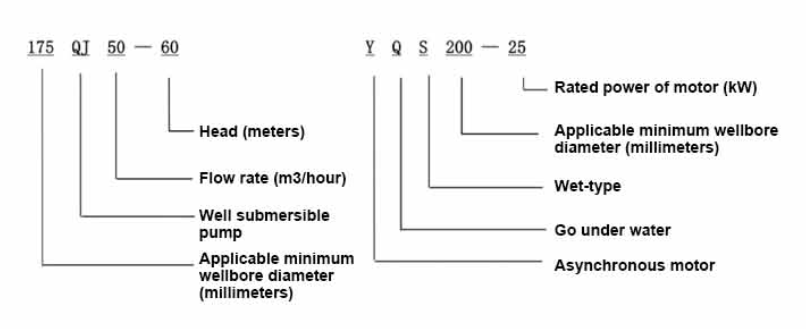Nov . 06, 2024 14:21 Back to list
Affordable Stainless Steel Submersible Pump Prices for Your Pumping Needs
Understanding the Pricing of Stainless Steel Submersible Pumps
Submersible pumps are vital components in various industries, offering efficient solutions for draining, sewage disposal, and groundwater extraction. Among the different materials used for these pumps, stainless steel is often preferred due to its durability, resistance to corrosion, and ability to withstand harsh environmental conditions. The price of stainless steel submersible pumps can vary widely based on several factors, which we will explore in this article.
Factors Influencing the Price
1. Material Quality The grade of stainless steel used in the construction of a submersible pump significantly affects its price. Higher-grade stainless steels, such as 316 or 304, offer better resistance to corrosion and are usually more costly. Pumps made from these materials are ideal for applications involving aggressive liquids, brackish water, or marine environments.
2. Pump Size and Capacity The size of the pump, including its horsepower and flow rate capacity, directly impacts the cost. Larger pumps capable of moving more water or handling higher pressures typically come with a higher price tag. For example, a small, residential submersible pump might cost a few hundred dollars, while a heavy-duty industrial pump could run into the thousands.
3. Brand Reputation Established brands with a good reputation for reliability and performance often have higher prices due to their investment in research, development, and quality assurance. When customers choose well-known brands, they often do so with the expectation of enhanced durability and better customer service, justifying the increased cost.
4. Design and Features The design of a submersible pump can include various features like automatic shut-off mechanisms, float switches for automatic operation, and energy-efficient motors. Pumps equipped with advanced technology and features tend to be more expensive. Users should weigh the benefits of these features against their specific needs to determine if the additional cost is warranted.
5. Application Type The intended use of the pump also affects pricing. Pumps designed for specific applications, such as waste management or high-temperature fluids, may be engineered differently and incorporate specialized materials, thus raising the price. Conversely, pumps meant for more general uses may be cheaper but could lack durability in specialized scenarios.
stainless steel submersible pump price

6. Market Demand and Supply Economic factors such as market demand and supply chain conditions can influence the prices of stainless steel submersible pumps. In times of high demand, prices may increase, while such a decrease in demand could lead to discounts and promotional offers.
Average Price Range
On average, the prices of stainless steel submersible pumps can range from approximately $200 to $1,500, with specific models and configurations exceeding this range. Basic models intended for residential use tend to be on the lower end, while heavy-duty models designed for industrial applications can cost significantly more.
Maintenance and Longevity Costs
While initial pricing is crucial for selection, it is equally important to consider the long-term maintenance costs associated with stainless steel submersible pumps. High-quality pumps tend to have longer lifespans and require less maintenance, potentially offering better value over time. Additionally, investing in a reputable brand can lead to better availability of replacement parts and technical support.
Conclusion
When purchasing a stainless steel submersible pump, it is essential to consider various factors such as material quality, pump size and capacity, brand reputation, design features, and application. While the initial price of pumps can vary, understanding these influencing factors helps potential buyers make informed decisions that fit both their budget and operational needs. By investing in the right product, users can ensure efficiency, durability, and peace of mind for their submersible pumping requirements.
-
Submersible Water Pump: The Efficient 'Power Pioneer' of the Underwater World
NewsJul.01,2025
-
Submersible Pond Pump: The Hidden Guardian of Water Landscape Ecology
NewsJul.01,2025
-
Stainless Well Pump: A Reliable and Durable Pumping Main Force
NewsJul.01,2025
-
Stainless Steel Submersible Pump: An Efficient and Versatile Tool for Underwater Operations
NewsJul.01,2025
-
Deep Well Submersible Pump: An Efficient 'Sucker' of Groundwater Sources
NewsJul.01,2025
-
Deep Water Well Pump: An Efficient 'Sucker' of Groundwater Sources
NewsJul.01,2025
-
 Submersible Water Pump: The Efficient 'Power Pioneer' of the Underwater WorldIn the field of hydraulic equipment, the Submersible Water Pump has become the core equipment for underwater operations and water resource transportation due to its unique design and excellent performance.Detail
Submersible Water Pump: The Efficient 'Power Pioneer' of the Underwater WorldIn the field of hydraulic equipment, the Submersible Water Pump has become the core equipment for underwater operations and water resource transportation due to its unique design and excellent performance.Detail -
 Submersible Pond Pump: The Hidden Guardian of Water Landscape EcologyIn courtyard landscapes, ecological ponds, and even small-scale water conservancy projects, there is a silent yet indispensable equipment - the Submersible Pond Pump.Detail
Submersible Pond Pump: The Hidden Guardian of Water Landscape EcologyIn courtyard landscapes, ecological ponds, and even small-scale water conservancy projects, there is a silent yet indispensable equipment - the Submersible Pond Pump.Detail -
 Stainless Well Pump: A Reliable and Durable Pumping Main ForceIn the field of water resource transportation, Stainless Well Pump has become the core equipment for various pumping scenarios with its excellent performance and reliable quality.Detail
Stainless Well Pump: A Reliable and Durable Pumping Main ForceIn the field of water resource transportation, Stainless Well Pump has become the core equipment for various pumping scenarios with its excellent performance and reliable quality.Detail
